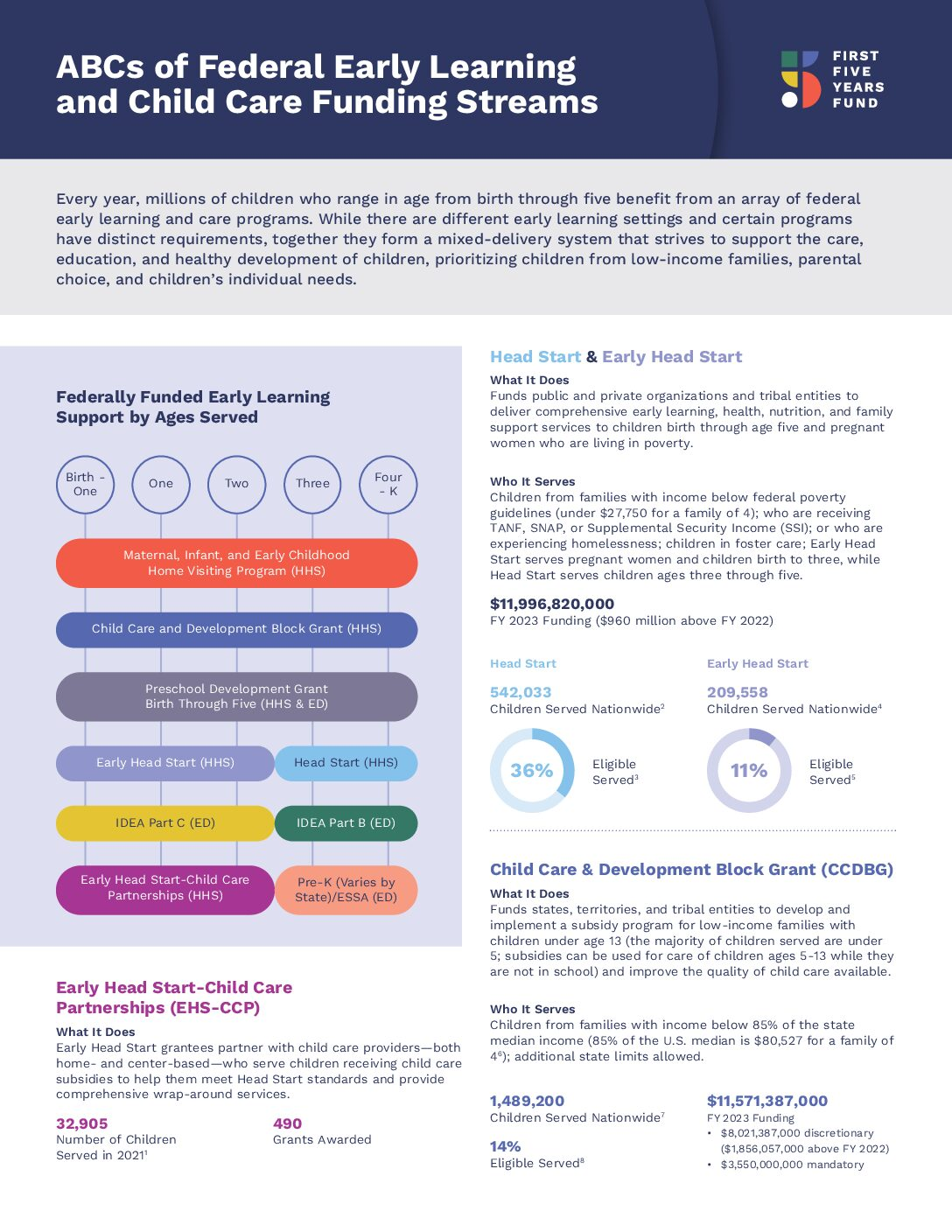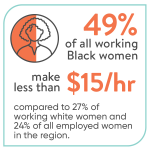Federally funded childcare programs have emerged as a crucial support system for working mothers in today’s economy. As highlighted by the groundbreaking research of Nobel laureate Claudia Goldin, historical precedents like the Lanham Act during World War II showcase the transformative power of such initiatives. This legislation not only aimed to mobilize women in the workforce to fill gaps left by men serving in the military but also provided essential care for their children. By creating a network of nurseries and extended care facilities, the Lanham Act laid the groundwork for understanding how targeted support can empower women and bolster economic participation. This exploration of federally funded childcare illustrates its potential to address childcare inequity, thus fostering greater workforce inclusion for both mothers and their children.
Childcare support funded by federal initiatives has become increasingly vital for families, particularly for those navigating the challenges of balancing work and parenting. This concept, echoing historical milestones like the wartime measures introduced by the Lanham Act, underscores the necessity of nurturing environments for children while enabling their parents, especially mothers, to engage in the workforce efficiently. The insights shared by Claudia Goldin bring to light how past childcare programs influenced labor dynamics and the success of women in various industries. Now, as society continues to advocate for equitable opportunities, understanding the legacy of such childcare systems becomes essential in crafting present-day policies. With a renewed focus on women’s roles in the economy, the importance of comprehensive childcare solutions cannot be overstated, as they serve as a bedrock for professional growth and family stability.
The Importance of Federally Funded Childcare for Working Mothers
Federally funded childcare plays a crucial role in supporting working mothers, enabling them to balance professional responsibilities while ensuring their children receive quality care and education. These programs offer not just childcare, but also a comprehensive support system that includes educational resources and meal provisions. As highlighted by Claudia Goldin’s research on the Lanham Act, initiatives aimed at providing childcare can significantly influence women’s participation in the workforce, particularly during critical periods such as World War II. By investing in such programs, society acknowledges the invaluable contributions of mothers and can facilitate higher workforce participation rates, ultimately leading to economic growth.
The historical context provided by Goldin’s study on the Lanham Act illustrates how effective federally funded childcare was in mobilizing women’s labor during the war. Without adequate support, many mothers faced insurmountable barriers to employment, thereby limiting their economic potential. The lack of significant childcare options meant that many talented women were left out of the workforce. This scenario emphasizes the ongoing need for robust childcare programs that not only aid in nurturing children but also empower women by allowing them to pursue careers without compromising their children’s wellbeing.
Lessons from the Lanham Act: Impacts on Women’s Workforce Participation
The Lanham Act serves as a historical lesson on the impact of childcare policies on women’s workforce participation. Claudia Goldin’s research reveals that the Act was formulated during a time of national crisis, aimed at a dual purpose of aiding families and bolstering the war effort. By creating nurseries and extending hours of care for children, the government recognized and utilized the potential of working mothers as essential contributors to the economy. This shift in perception was pivotal, providing a model of how supportive policies can transform labor dynamics and promote gender equity.
While the original aim of the Lanham nurseries was to support working mothers during wartime, the benefits extended far beyond their immediate purpose. It showcased the economic advantages of employing women, resulting in increased labor participation and a diversification of the workforce. Today, as we face challenges in achieving gender equity, revisiting policies similar to the Lanham Act could guide modern approaches to childcare and employment strategies, ensuring that women are not only included but prioritized in workforce participation.
Claudia Goldin’s Research Insights into Childcare Programs
Claudia Goldin’s extensive research offers profound insights into the role of childcare programs in shaping women’s economic opportunities. By examining the historical implications of the Lanham Act, Goldin challenges contemporary perceptions about the necessity of childcare in supporting working mothers. Her analysis reveals that effective childcare policies are essential in influencing not just women’s immediate employment, but also their long-term career trajectories and earning potentials, emphasizing the value of investing in such initiatives.
Furthermore, Goldin’s work highlights the necessity of collecting comprehensive data regarding childcare programs and their effects on women and families. Understanding where resources are allocated, and identifying gaps in support can lead to more equitable distributions that meet the needs of working mothers. This detailed approach would allow policymakers to craft targeted childcare solutions that enhance women’s roles in the workforce while fostering an environment where families can thrive.
Historical Context of Childcare During WWII
The wartime era of World War II marked a significant turning point in the perception and provision of childcare in the United States. The Lanham Act was a response to the immediate need for working mothers to participate in the workforce to support the war effort. The establishment of nurseries catered to families who required assistance, transforming the landscape of childcare from a private concern to a public responsibility, thereby setting a precedent for future generations.
Understanding this historical framework highlights the continuous evolution of childcare policies and their implications for the labor market. The success of the Lanham nurseries demonstrated that adequate childcare could mitigate the traditional barriers faced by women in the workforce. It paved the way for the recognition of women as vital economic actors, which is as relevant today as it was in the 1940s, underscoring the ongoing need for robust support systems that cater to working mothers.
Challenges Faced by Working Mothers Today
Despite the advancements made since the World War II era, working mothers continue to encounter numerous challenges in balancing professional and personal responsibilities. A lack of accessible and affordable childcare solutions remains a significant barrier, often forcing mothers to make difficult choices between career advancement and family obligations. The insights of economists like Goldin reveal that without sufficient support, many capable and skilled women may withdraw from or remain underrepresented in the workforce.
Moreover, prevailing societal attitudes often portray working mothers in a negative light, further complicating their efforts to contribute to the economy. This stigma creates an environment where mothers feel less empowered to seek opportunities aligned with their skills and aspirations. Addressing these challenges requires not only effective policy changes but also a shift in societal perceptions regarding the role of mothers in the workforce.
The Role of Childcare Programs in Gender Equity
Childcare programs are pivotal to achieving gender equity in the workplace. They enable women to pursue professional opportunities without the added stress of finding suitable care for their children. The historical evidence from the Lanham Act indicates that when women have reliable and comprehensive childcare options, they can contribute significantly to the economy, thus benefiting employers and the workforce as a whole.
As more women enter various industries, the emphasis on aligning workplace policies with family needs becomes vital. Organizations that recognize the importance of supporting working mothers through childcare initiatives are more likely to attract and retain talent. This not only fosters a diverse and inclusive workplace but also reflects a commitment to gender equity that can enhance overall business performance.
The Economic Impact of Investing in Childcare
Investing in childcare is not simply a moral imperative but an economic one. The positive outcomes of the Lanham Act demonstrate that federal support for childcare directly correlates with increased labor force participation among women. When governments and organizations allocate resources towards creating robust childcare programs, they unlock economic potential and create a pathway for sustainable growth.
Research shows that the economic return on investing in childcare is significant. Families with access to quality childcare are more likely to thrive economically, resulting in higher tax revenues and reduced reliance on government assistance. By fostering an environment where working mothers are supported, we can create a more productive workforce, drive economic resilience, and cultivate a more equitable society.
Recommendations for Future Childcare Policies
In light of the findings from Goldin’s research, future childcare policies must be comprehensive and inclusive. Policymakers should consider the diverse needs of families, ensuring that programs are accessible to all socioeconomic backgrounds. This could involve a combination of federal and local investments tailored to the specific challenges faced by working mothers in different regions.
Moreover, fostering partnership models between public, private, and nonprofit sectors could enhance funding for childcare initiatives and create a more dynamic support system. Such collaborative efforts would ensure a broader reach, catering to the unique needs of communities, and ultimately facilitating a more equitable workplace for everyone.
Empowering Women Through Childcare Solutions
Empowering women in the workforce starts with addressing the structural barriers that hinder their progress. Effective childcare solutions must be at the forefront of any discussion about gender equity in employment. Programs that lower the cost of childcare, offer flexible hours, and emphasize quality care not only aid working mothers but uplift entire families, allowing women to engage fully in their careers.
The legacy of programs like those initiated under the Lanham Act illustrates that targeted support can drive substantial social change. By continuing to champion and expand access to childcare, we not only provide immediate benefits to families but also lay a foundation for a more inclusive economy where women’s contributions are valued and recognized.
Frequently Asked Questions
What is federally funded childcare and how does it support working mothers?
Federally funded childcare provides financial support for childcare programs that assist working mothers, allowing them to balance job responsibilities with childcare needs. Such programs, like those initiated under the Lanham Act during World War II, were designed to create accessible nurseries and extended care services, enabling mothers to engage in the workforce without sacrificing their children’s care.
How did the Lanham Act influence federally funded childcare in the 1940s?
The Lanham Act significantly shaped federally funded childcare by allocating resources for nurseries aimed at working mothers during World War II. This act facilitated the establishment of nurseries that offered education and care for children, thereby increasing the number of women participants in the workforce as they could secure reliable childcare.
What role does Claudia Goldin play in the study of federally funded childcare?
Claudia Goldin, a Nobel Prize-winning economist, has conducted extensive research on the historical context and impact of federally funded childcare programs, particularly the Lanham Act. Her analysis reveals how these initiatives affected women’s participation in the workforce during the mid-20th century and highlights the importance of political support in fostering childcare accessibility for working mothers.
How do childcare programs contribute to the workforce participation of women?
Childcare programs, particularly federally funded ones, are essential for encouraging workforce participation among women. By providing affordable and accessible childcare options, these programs directly support working mothers, helping them balance family obligations with career pursuits and promoting gender equity in employment.
What are the long-term benefits of federally funded childcare for working mothers?
Long-term benefits of federally funded childcare for working mothers include enhanced career opportunities, increased economic independence, and improved child development outcomes. Research, including findings by Claudia Goldin, indicates that these programs can lead to higher labor force participation rates among women, fostering overall economic growth.
Why are federally funded childcare programs important for gender equity in the workforce?
Federally funded childcare programs are crucial for achieving gender equity in the workforce because they provide essential support systems that enable working mothers to pursue career advancement. These programs reduce barriers to employment, allowing women to contribute equally to the economy while ensuring their children receive quality care.
What historical lessons can be learned from the Lanham Act about federally funded childcare?
The historical lessons from the Lanham Act illustrate the significant impact that federally funded childcare can have on labor dynamics, especially during crises. By understanding how this act mobilized working mothers during World War II, current policymakers can glean insights on the necessity and benefits of robust childcare programs to support women’s workforce participation today.
How can working mothers benefit from federally funded childcare in contemporary society?
In contemporary society, working mothers benefit from federally funded childcare by gaining access to reliable and affordable care options that enable them to pursue their careers. Such programs can help alleviate the challenges of juggling work and family responsibilities, thus improving work-life balance and promoting women’s equality in the labor market.
| Key Points | Details |
|---|---|
| The Lanham Act’s Purpose | Originally financed infrastructure, later funded childcare for working mothers. |
| Historical Context | Introduced during WWII to support women’s labor in response to the war effort. |
| Program Scope | Created nurseries for preschool children and extended care services. |
| Capacity and Funding | Included federal funding exceeding $52 million from 1943-46. |
| Impact on Workforce | Enabled more women to enter the workforce, particularly in industries such as defense and textiles. |
| Target Demographic | Aimed at working mothers with children aged 2 to 11, though primarily benefited those already employed. |
| Challenges and Limitations | Benefited regions with existing employment opportunities rather than those with the greatest need. |
| Ongoing Research | Goldin continues to uncover information that may reshape understanding of the program’s impact. |
Summary
Federally funded childcare has proven to be a pivotal means of supporting working mothers, particularly illustrated through the historic Lanham Act during World War II. The act not only provided essential childcare services but also facilitated women’s contributions to the workforce, reflecting the significant societal changes stemming from government support in times of need. As research continues, it remains evident that such federal initiatives could play a crucial role in empowering women and advancing gender equity in the modern workplace.


